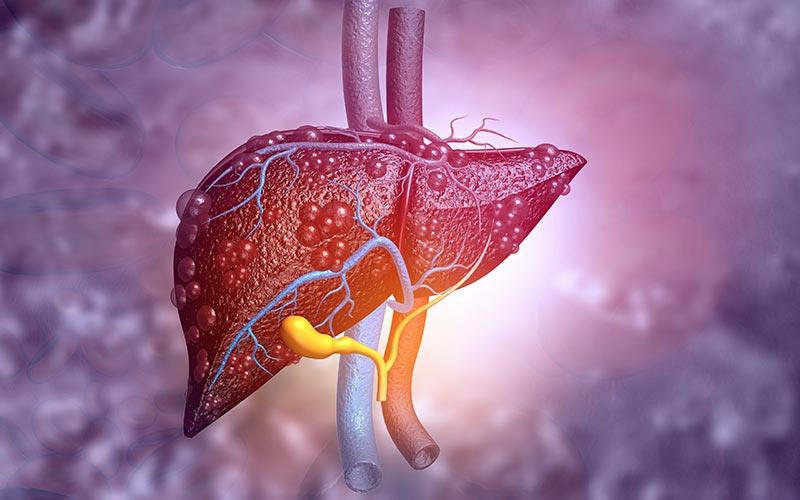
Symptomatic coronary heart disease (CHD) is significantly associated with high-grade nonalcoholic fatty liver disease (NAFLD), which is predicted by liver stiffness, reveals a new study.
“The higher degree of liver stiffness in patients with NAFLD, the higher risk of CHD in these NAFLD patients,” the researchers said.
NAFLD and visceral fat thickness were shown to have a significantly positive correlation with CHD and Gensini score (p<0.001). In multivariable analysis, CHD was predicted by age, male, cholesterol, visceral fat thickness and liver stiffness. [J Clin Gastroenterol 2020;54:271-277]
Cutoff points for the prediction of CHD were as follows: age, >50 years (area under the curve [AUC], 0.678; sensitivity, 87 percent; specificity, 42.6 percent); cholesterol, >3.76 mmol/L (AUC, 0.687; sensitivity, 684 percent; specificity, 64.8 percent); visceral fat thickness, >7.41 cm (AUC, 0.694; sensitivity, 52.6 percent; specificity, 87 percent); and liver stiffness, >6.1 kPa (AUC, 0.798; sensitivity, 50 percent; specificity, 92.6 percent).
The addition of liver stiffness to a prediction model that included age, gender and cholesterol led to a more robust predictive value (p=0.005).
Previous studies have shown the negative effect of NAFLD on CHD risk, which could have certain implications for the screening and surveillance strategies that should be used for the increasing number of NAFLD patients. [Nat Rev Gastroenterol Hepatol 2013;10:330-344; Hepatology 2014;59:1174-1197]
Studies in Italy also found a significantly higher CHD prevalence in patients with diabetes and NAFLD than in those without NAFLD. They also showed that NAFLD was predictive of CHD, independent of traditional risk factors. This was then supported by Mirbagheri and colleagues in their study, in which they found that NAFLD was the strongest predictor of CHD as compared to both age and diabetes. [Diabetes Care 2007;30:1212-1218; J Hepatol 2010;53:713-718; Liver Int 2007;27:891-894]
“Although the pathophysiological mechanisms linking NAFLD with CHD are not completely understood, NAFLD is associated with the metabolic syndrome, which comprises abdominal obesity, ectopic fat accumulation, hyperglycaemia, insulin resistance, atherogenic dyslipidaemia and hypertension, all of which predispose toward inflammation and atherosclerosis,” the researchers said.
“CHD ultimately develops as the result of a series of pathologic processes,” they added. [Expert Rev Gastroenterol Hepatol 2015;9:629-650; Arterioscler Thromb Vasc Biol 2014;34:1155-1161; Semin Thromb Hemost 2013;39:214-228; Nat Rev Gastroenterol Hepatol 2009;6:236-247]
The present study recruited 120 consecutive patients who had been initially diagnosed with CHD based on their symptoms. All participants underwent coronary angiography or computed tomography angiography and were classified into a CHD or a non-CHD group according to the results. The patients underwent liver ultrasonography, shear-wave elastography and visceral fat thickness measurement.
“Further investigation, involving a large-scale prospective study, is warranted to determine the accuracy and the clinical efficacy of the measurement of liver stiffness in patients with NAFLD for the diagnosis of CHD,” the researchers said.